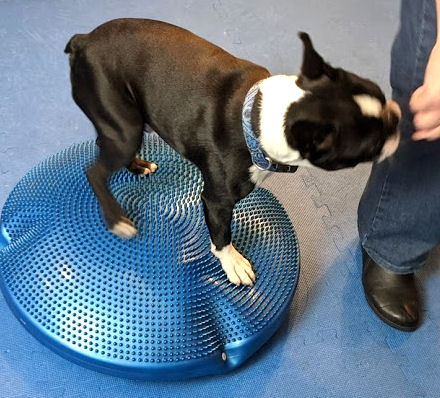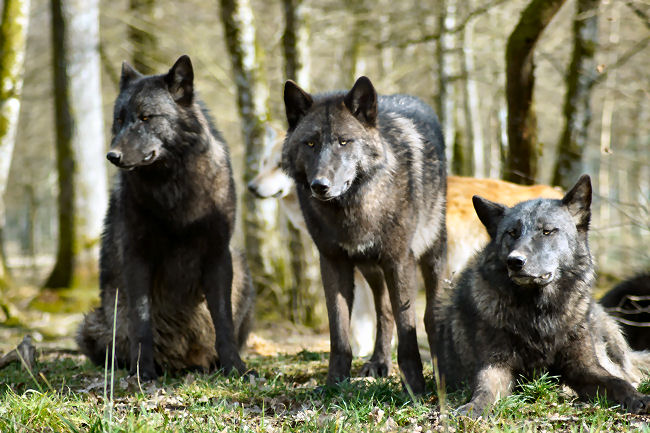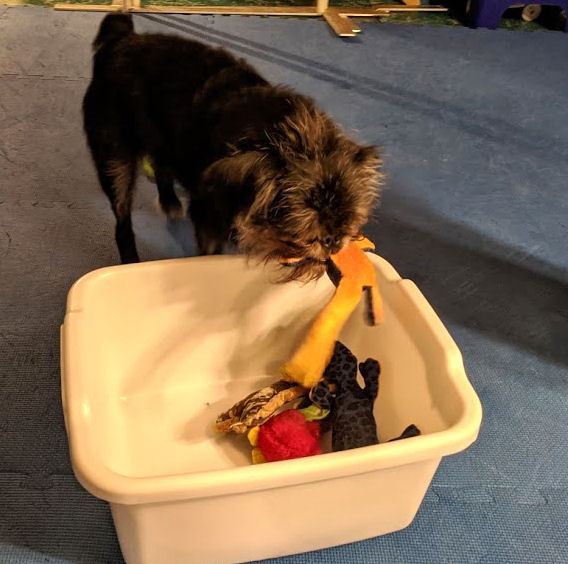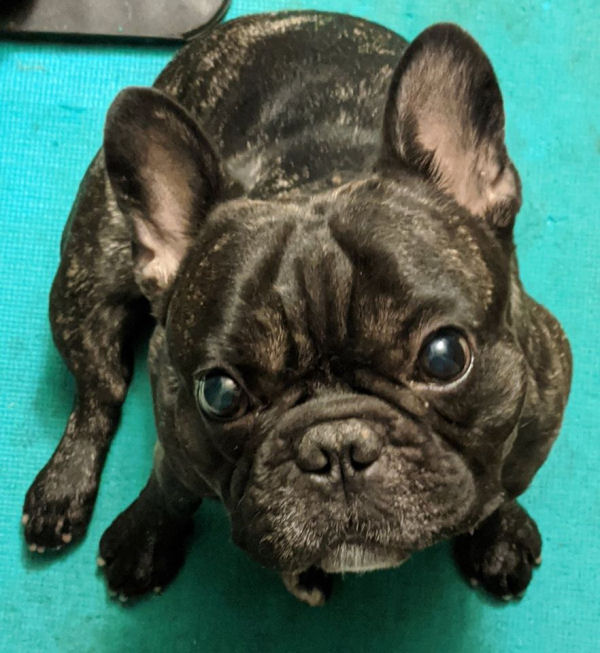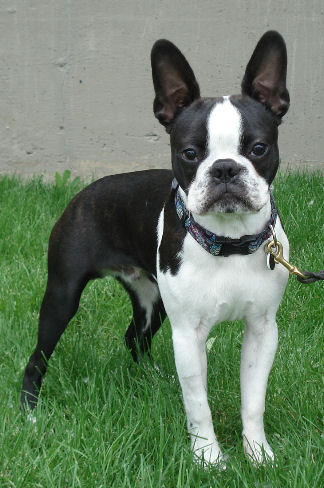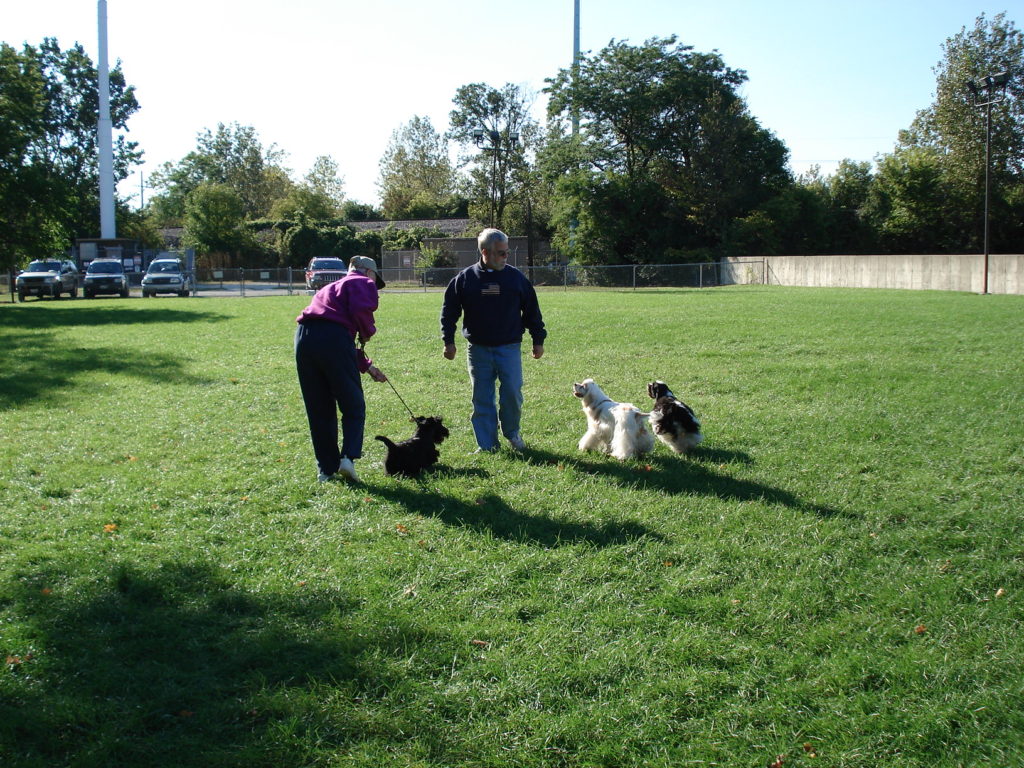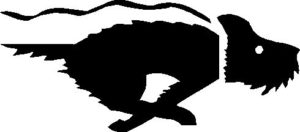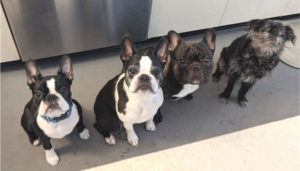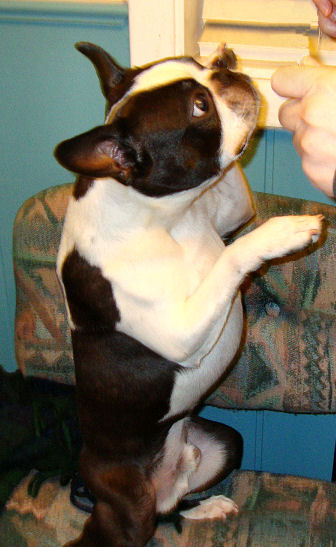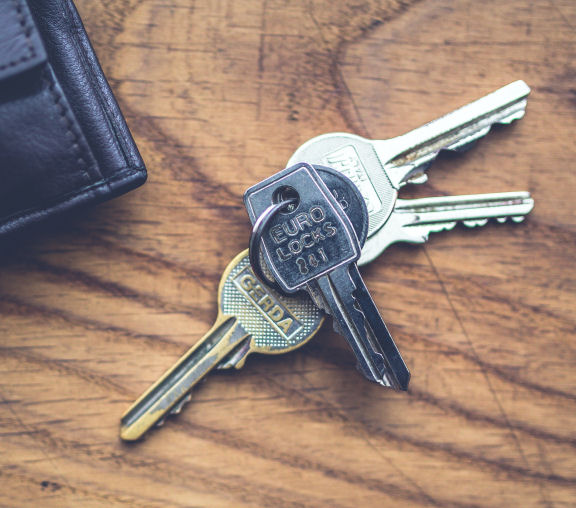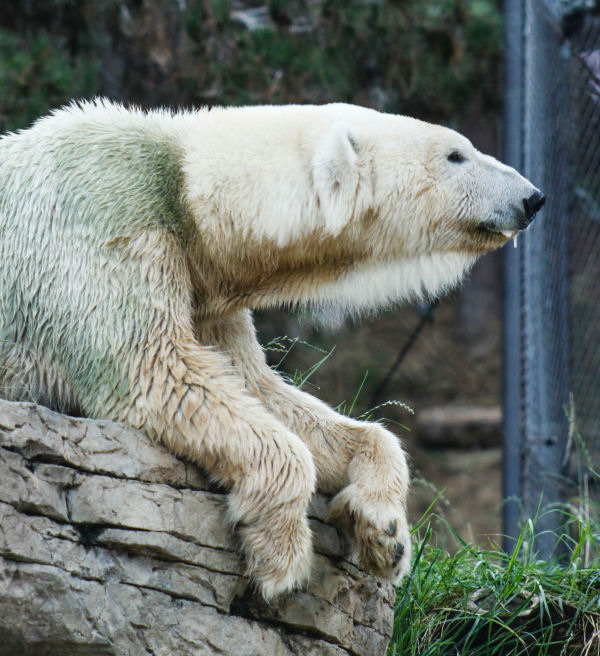“There are only two emotions that belong in the saddle: a sense of humor and patience.” We saw this meme, pictured with a woman and horse walking away together. We loved it, and the note a friend posted with it: “The same for the end of a leash.”
If we equip ourselves with these two things only: patience and a sense of humor, there’s no limit to what we can do with our dogs.
From the start – when you get your puppy – patience will serve you well, as in Puppy Basics: Calm Down!
Patience teaches us
Just by waiting, we can see how our dogs think and interact with their environment. It’s not always easy, and we don’t always have the time or opportunity to let them figure stuff out. But when we can, it’s worthwhile.
To this day we battle with the temptation to “help” our dogs solve their problems.
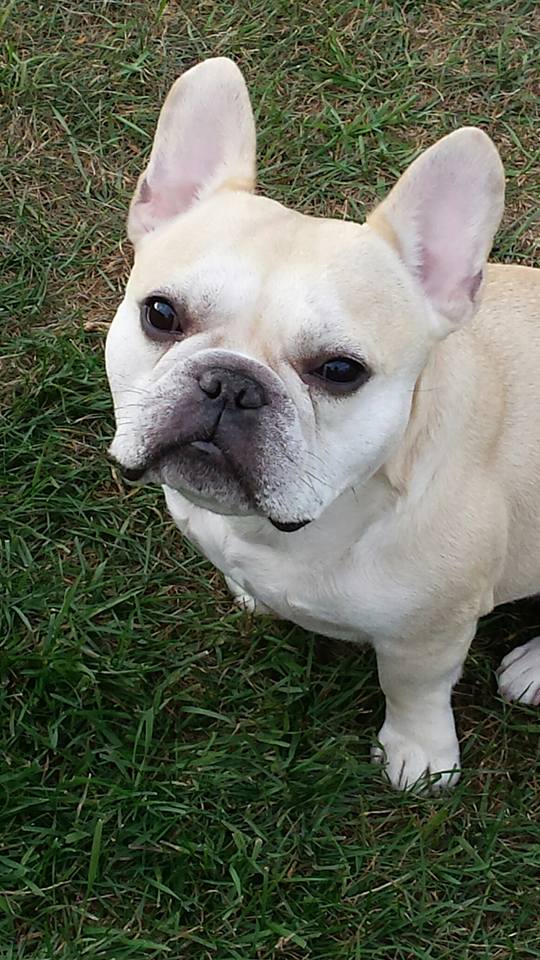
It was especially difficult not to help Teddy, Hope’s French Bulldog. He wasn’t much of a thinker, but he was extremely food motivated and loved chasing away any wildlife that wandered into our yard.
One day he chased a squirrel and found himself “trapped” in a narrow section of the yard between the fence and the garage. It’s an area we keep the pooper scooper and bucket, so tight quarters. The tools were leaning against the fence, as always. The passage was narrow, but he’d gotten himself through there in the heat of the chase.
When the squirrel was gone and Teddy was ready to resume his sniff patrol, he thought he was trapped behind the tools, and started whining.
Hope started going to help, but her dog-trainer brain kicked in and she resisted the temptation. She had nothing pressing on the agenda, and a good supply of patience.
Waiting is hard
So she looked at Teddy and said “You got in there, buddy. Figure it out. You can get out again.” Even though he probably didn’t understand a word of it, Teddy got the message that Hope was there, not angry, and that she wasn’t moving to “rescue” him.
It took a few minutes and the urge to “help” was powerful. Teddy was a whiner when he wanted something. And he’d learned through the years that Hope would go a long way to make it stop – whining makes her crazy. This time, it didn’t work at all.
Success at last
Teddy made a few feints at wrong openings before he finally found the one he’d gotten through in the first place. He gained his “freedom” which he was happy about. He got something else, too. You could absolutely see how proud he was to have figured out the solution. His gait had a strut and his face wore a smile. So did Hope’s.

